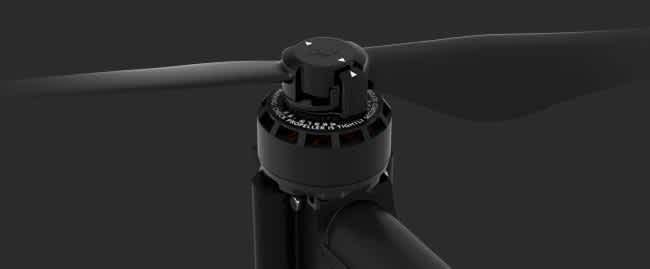
News
New Inspire Props and Motors and a Flying Computer
DJI have announced new props and motors for the Inspire 1. They've also released the Manifold - an onboard computer for software development. ... Read More
DJI have upgraded the propellers and motors on their extremely popular Inspire 1 quadcopter. They've also unveiled a computer that can be used on board their drones for software development.
New Inspire 1 props and motors
The company says the new props and motors mean that the flight times will be the same but control and performance will improve. They also say there'll be a slight increase in price because of the higher quality components that have been used.
New-Inspire-props-motors.jpg The new prop and motor for the DJI Inspire 1
New propellers on the Inspire 1 use a different mounting and locking mechanism from current props but remain easy to use. Full instructions will be released soon but we are assuming that you'll be able to upgrade to the new prop/motor combos in the future, provided you replace complete sets.
New 3510H motors have 420KV of power, improving flight performance and providing pilots with a greater sense of control compared to the present 350KV motors.
You can see the two sets alonside each other in the pictures below.
Old-and-new-Inspire-props.jpg Old-and-new-Inspoire-motors.jpg
DJI Manifold SDK computer
DJI has also launched a flying computer for software work. It's called the Manifold and it's an embedded Linux computer for use on DJI multi-rotors, especially the Matrice 100, and designed for software and application development using the DJI SDK kit.
According to DJI "It enables developers to transform aerial platforms into truly intelligent flying robots that can perform complex computing tasks and advanced image processing literally on the fly."
For the seriously technically minded, this is what DJI have to say "With the NVIDIA Tegra K1's 4-Plus-1 Quad-core ARM Cortex-A15 Processor and 192 GPU CUDA cores with clock speeds of up to 2.2 GHz, the Manifold allows you to take off with the world's most advanced mobile processors. The GPU cores provide powerful image processing abilities, efficient parallel computing, and a blazing fast throughput of 326 GFLOPS. Now you can design more intelligent applications that unlock the full potential of your aerial platforms in whole new ways.
"Designed for developers, the Manifold's built-in Ubuntu operating system supports CUDA, OpenCV and ROS. It is ideal for research and development of professional applications. The Manifold can natively run the DJI Onboard SDK, access flight data and perform intelligent control and data analysis. With CUDA, the Manifold can be used to accelerate your applications to achieve unprecedented levels of performance.
dji-matrice-and-manifold-e1446472145125.jpg The DJI Matrice with a Manifold onboard
"The Manifold is optimized for power efficiency with a peak power consumption of approximately 15 W, or one fourth of that of a typical laptop. The Manifold's Tegra CPU uses four A15 cores for heavy computing tasks, and a single battery-saver core when performing simple calculations. The number of active cores can be dynamically adjusted to decrease power consumption, and the extra core will automatically be activated when needed."
The Manifold has a PC graphics card which will help your remote controlled aircraft to process high resolution images in real time. DJI say it can be deployed for use in artificial intelligence applications such as computer vision and deep learning. This means your aerial platforms will not only be able to sense the surrounding environment, but also identify objects and respond in an instant.
The Matrice 100, apart from having a purpose-built bay to house the Manifold, can also be used with Guidance, DJI's detect and avoid device.
Manifold specs
Processor | Quad-core, 4-Plus-1™ ARM® |
Low-power NVIDIA Kepler™-based GeForce® graphics processor | |
Image-signal processor | |
Ultra low-power audio processor | |
Advanced power management | |
Dynamic voltage and frequency scaling | |
Multiple clock and power domains | |
Memory | 2 GB DDR3L RAM |
16 GB eMMC 4.51 storage | |
Audio | Microphone jack |
Headphone jack | |
USB | USB Type-A Host 3.0×2 |
USB Type-A Host 2.0×2 | |
Micro-B USB connector (Recovery USB): supports Force Recovery mode and Host mode | |
Non-standard USB 2.0 interface with drone | |
Network | 10/100/1000 BASE-T Ethernet |
I/O | Half mini-PCIe expansion slot |
Mini Display HDMI connector | |
UART connector | |
Micro SD card slot | |
I/O expansion headers | |
Buttons | Power |
Reset | |
Recovery | |
Power Options | External 14 V~26 V AC adapter |
